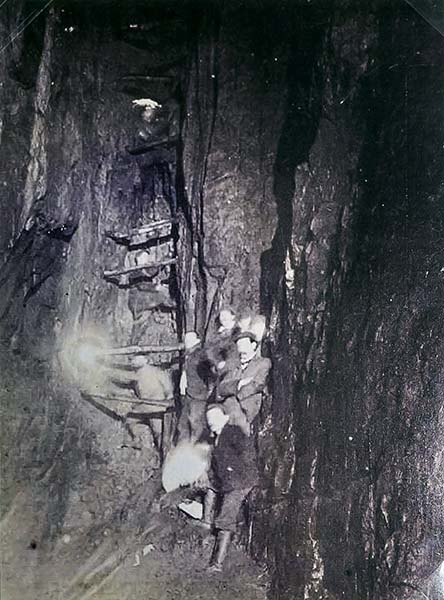bograt
Active member
Having spent time recently researching Pin Dale Quarry, my fermented mind started drifting;
It is widely accepted that Pin Dale Quarry intersected an abandoned cave passage, the original flow being out of Pindale Quarry Cave (PQC) and into Black Rabbit (BRC) IIRC.
It is also thought that PQC is likely to connect to somewhere in the E side of Peak Cavern after it has negotiated Dirtlow Rake.
After spending some time in BRC in the late '70's early '80's we came across a small stream which appeared to trend to the SE., heading towards Outlands Head, a now lost system strongly suspected to link with Bagshawe.
Question; Is Pindale a possible key to a hydrological link between Peak and Bagshawe?.
I realise that accessible passage in this area is unlikely due to mining and quarrying activities but nevertheless it is an intriguing idea and could be resolved to some degree by a study of surface related surveys of the whole area including East Peak Cavern, Bagshawe, Outlands Head, PQC, BRC, maybe Moorfurlong, Bird and any other mines known to have natural development in the vicinity. Do any such SR surveys exist?
Straying further into the realms of fantasy, I came across a suggestion recently that Milldam Mine straddles the watershed between Bagshawe and Eyam Dale, a link between Peak and Carleswark would be a target to aim for !!
It is widely accepted that Pin Dale Quarry intersected an abandoned cave passage, the original flow being out of Pindale Quarry Cave (PQC) and into Black Rabbit (BRC) IIRC.
It is also thought that PQC is likely to connect to somewhere in the E side of Peak Cavern after it has negotiated Dirtlow Rake.
After spending some time in BRC in the late '70's early '80's we came across a small stream which appeared to trend to the SE., heading towards Outlands Head, a now lost system strongly suspected to link with Bagshawe.
Question; Is Pindale a possible key to a hydrological link between Peak and Bagshawe?.
I realise that accessible passage in this area is unlikely due to mining and quarrying activities but nevertheless it is an intriguing idea and could be resolved to some degree by a study of surface related surveys of the whole area including East Peak Cavern, Bagshawe, Outlands Head, PQC, BRC, maybe Moorfurlong, Bird and any other mines known to have natural development in the vicinity. Do any such SR surveys exist?
Straying further into the realms of fantasy, I came across a suggestion recently that Milldam Mine straddles the watershed between Bagshawe and Eyam Dale, a link between Peak and Carleswark would be a target to aim for !!



